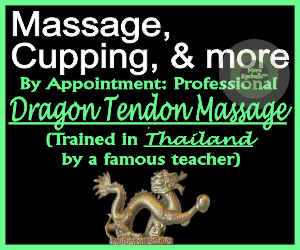
Image

In mid-July, Gov. Gavin Newsom gave guidelines for barber shops, nail salons and massage businesses that allowed them to stay in practice, if they moved outdoors.Credit...Mario Anzuoni/Reuters
Good morning. You cannot give a massage over Zoom. And that means California’s decisions to declare many massage therapists as nonessential workers has made their lives especially challenging in the pandemic.
As part of our effort to answer reader questions — we call it Your Lead — we heard from Marion Pernoux, a massage therapist and reiki practitioner, who asked, “How do California officials define essential health providers and why is my professional specialty not included in this category?”
Ms. Pernoux lives in San Francisco, which is one of six counties in California that have not reopened massage establishments. Because of the spike in coronavirus cases, officials in San Francisco pushed back their original target date for reopening personal care businesses and have not specified a new date.
According to the California Massage Therapy Council, which is tracking openings around the state, other counties including Los Angeles, San Bernardino, San Luis Obispo and San Diego are allowing outdoor massages only. Humboldt, Mariposa and Inyo counties are allowing massages as normal.
[Track coronavirus cases by California county.]
The reopening list, which is constantly in flux, is based on the state’s monitoring rules. For counties that have been on the monitoring list for three consecutive days, some personal care services may be provided outdoors, but all indoor operations must remain closed.
Updated 2020-07-31T16:19:37.330Z
Ms. Pernoux’s practice, which she has had for 15 years, has gone virtual. At the start of the pandemic, she began providing reiki, a form of energy healing that involves touch, over Zoom. Her “distant reiki” sessions use a combination of breathwork and guided meditation. She began by treating a group of nurses at a local hospital and the online sessions eventually reached people outside California, in states like Wisconsin.
The state has a broad definition of essential workers based on their particular industry. Essential health care workers include doctors and nurses as well as food service and waste management workers. Massage therapists who practice outside of clinical health care settings are not classified as essential.
Still, Ms. Pernoux says that she wants people to know that massage therapists and healers can play an important role.
“It’s not just relieving muscle tension,” she said. “It’s the clinical aspect of tending to somebody who’s allowed to just completely let go.”
In mid-July, Gov. Gavin Newsom announced guidelines for barber shops, nail salons and massage establishments that allowed them to stay in practice, if they moved outdoors.
“We talk often, not just about masks, but the importance of moving indoor activities outdoors,” Mr. Newsom said.
While some businesses were forced to close, others adapted to the order.
Sparrow Harrington is the owner of Sparrow’s Nest Wellness Center in Los Angeles, which provides prenatal and postpartum therapeutic massage care. Ms. Harrington shut down her business for three months to comply with stay-at-home orders. She reopened in late June and for two weeks provided services in the office. Then came the order to move outside.
“We had one day’s notice,” Ms. Harrington said. “We had clients on the books for the next day and it had to be outdoors.”
The Coronavirus Outbreak ›
Frequently Asked Questions
Updated July 27, 2020
- Should I refinance my mortgage?
- It could be a good idea, because mortgage rates have never been lower. Refinancing requests have pushed mortgage applications to some of the highest levels since 2008, so be prepared to get in line. But defaults are also up, so if you’re thinking about buying a home, be aware that some lenders have tightened their standards.
- What is school going to look like in September?
- It is unlikely that many schools will return to a normal schedule this fall, requiring the grind of online learning, makeshift child care and stunted workdays to continue. California’s two largest public school districts — Los Angeles and San Diego — said on July 13, that instruction will be remote-only in the fall, citing concerns that surging coronavirus infections in their areas pose too dire a risk for students and teachers. Together, the two districts enroll some 825,000 students. They are the largest in the country so far to abandon plans for even a partial physical return to classrooms when they reopen in August. For other districts, the solution won’t be an all-or-nothing approach. Many systems, including the nation’s largest, New York City, are devising hybrid plans that involve spending some days in classrooms and other days online. There’s no national policy on this yet, so check with your municipal school system regularly to see what is happening in your community.
- Is the coronavirus airborne?
- The coronavirus can stay aloft for hours in tiny droplets in stagnant air, infecting people as they inhale, mounting scientific evidence suggests. This risk is highest in crowded indoor spaces with poor ventilation, and may help explain super-spreading events reported in meatpacking plants, churches and restaurants. It’s unclear how often the virus is spread via these tiny droplets, or aerosols, compared with larger droplets that are expelled when a sick person coughs or sneezes, or transmitted through contact with contaminated surfaces, said Linsey Marr, an aerosol expert at Virginia Tech. Aerosols are released even when a person without symptoms exhales, talks or sings, according to Dr. Marr and more than 200 other experts, who have outlined the evidence in an open letter to the World Health Organization.
- What are the symptoms of coronavirus?
- Does asymptomatic transmission of Covid-19 happen?
- So far, the evidence seems to show it does. A widely cited paper published in April suggests that people are most infectious about two days before the onset of coronavirus symptoms and estimated that 44 percent of new infections were a result of transmission from people who were not yet showing symptoms. Recently, a top expert at the World Health Organization stated that transmission of the coronavirus by people who did not have symptoms was “very rare,” but she later walked back that statement.
Ms. Harrington and her team quickly set up a massage table in a gazebo on her property. At the office, they set up an open-air tent on the patio to shield clients and therapists from the sun while allowing fresh breezes to flow through. Massage therapists changed their uniforms to shorts and jumpers, and a cooling fan was added to the space.
Performing massages outdoors has been surprisingly smooth, Ms. Harrington said, even with the rising temperatures in Southern California.
“We’re just really grateful that we had the opportunity to be able to not just have a hard stop but to be able to adapt in a way that can make this more safe and sustainable for our clients,” she said.
Have a question about how the pandemic is changing daily life in California? Click here to submit.
Here’s what else we’re following
We often link to sites that limit access for nonsubscribers. We appreciate your reading Times coverage, but we also encourage you to support local news if you can.
A United States Geological Survey map showing the location of the earthquake that struck Southern California early Thursday.Credit...U.S. Geological Survey
A 4.2-magnitude earthquake and its aftershocks rolled through the Los Angeles area early on Thursday, but there were no immediate reports of damage. [The New York Times]
What happens to police officers seen using excessive force against protesters? Apparently very little. But ProPublica is hoping to gather more information from anyone who may have witnessed incidents. [ProPublica]
An appeals court in Pasadena ruled that the actress Ashley Judd can proceed with a sexual harassment claim as part of a lawsuit against Harvey Weinstein. [The New York Times]
Statistical gaps can make it difficult to properly allocate public resources to Native Americans. Still, there are strong indications that Native Americans have been disproportionately affected by the coronavirus. [The New York Times]
Some California tenants have faced increasingly aggressive eviction efforts over the last month, despite emergency protections meant to preserve people’s housing during the pandemic. Hundreds of thousands of renters are at risk of becoming homeless. [The Guardian]
The University of Southern California has reported an outbreak of around 40 positive coronavirus cases involving people living in the university’s Greek row. [Los Angeles Times]
Track outbreaks at college campuses. [The New York Times]
California Pizza Kitchen, a chain restaurant founded in 1985 in Beverly Hills, filed for Chapter 11 bankruptcy in Houston on Wednesday. [Bloomberg]
Also, read The Times’s California restaurant critic, Tejal Rao, on how the C.P.K. barbecue chicken pizza helped her fall in love with America as a kid. [The New York Times Magazine]
A group of five Anaheim high schoolers started a podcast, “Teenager Therapy,” in 2018. In the pandemic, many teens have turned to the show to help them through a difficult time, making it a breakout hit. [The New York Times]
California Today goes live at 6:30 a.m. Pacific time weekdays. Tell us what you want to see: CAtoday@nytimes.com. Were you forwarded this email? Sign up for California Today here.
Jill Cowan grew up in Orange County, went to school at U.C. Berkeley and has reported all over the state, including the Bay Area, Bakersfield and Los Angeles — but she always wants to see more. Follow along here or on Twitter, @jillcowan.
California Today is edited by Julie Bloom, who grew up in Los Angeles and graduated from U.C. Berkeley.




































































































